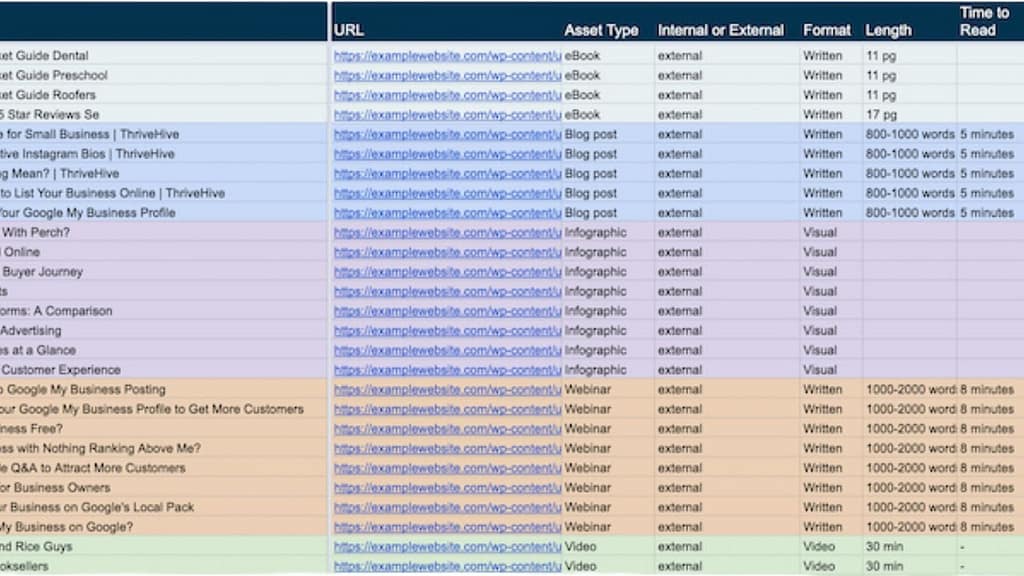Banana Update 2025 Google’s search algorithm never stands still. With every update, the way websites appear in search results can change dramatically. For business owners, digital marketers, and content creators, staying ahead of these changes is essential to maintain visibility and drive organic traffic.
The latest algorithm adjustment, popularly dubbed the “Google Banana Update,” promises to be a significant shift. Its primary goal is simple but powerful: deliver the most useful, high-quality results to users while filtering out low-value, irrelevant content. In other words, less clutter and more content that genuinely helps people.
So, what does this mean for your rankings? How will it affect the way you reach your audience? In this article, we’ll break down everything you need to know about the Banana Update and share actionable strategies to keep your website strong, authoritative, and visible in search results. For more insights on staying ahead in the ever-changing world of SEO, check out our tecnish home page for the latest updates and expert guides.
Understanding the Nano Banana Update 2025: What’s New?

The Banana Update introduces significant changes in how Google determines which websites appear at the top of search results. At its core, this update prioritizes content that offers real value and a great user experience, signaling a clear shift toward quality over quantity.
Webmasters and content creators will notice that Google is placing stronger emphasis on user satisfaction, content depth, and expertise. Sites that deliver thin, repetitive, or low-value content may see their rankings drop, whiled pages that provide in-depth insights, clear information, and practical value are likely to benefit.
For example, websites that explore how AI impacts the environment (read more here) or detailed technology guides like 5G advancements (check out this guide) may see their expertise recognized under this update, reflecting Google’s commitment to trustworthy, helpful content.
According to Banana 2025 update This is a crystal clear signal that Google is always serious about filtering out weaker sites and rewarding content that is informative, accurate, and engaging. Staying aligned with these standards is crucial for maintaining visibility and authority in search results.
Emphasis on Content Quality and E-E-A-T
The Banana Update shines a spotlight on content that demonstrates Experience, Expertise, Authoritativeness, and Trustworthiness (E-E-A-T). Google increasingly wants to see that your content is created by knowledgeable and reliable sources, offering unique insights rather than copying from others. High-quality, authoritative content is no longer optional—it’s essential for maintaining strong rankings.
To boost your E-E-A-T, consider these strategies:
- Ensure author bios highlight real credentials, professional experience, or first-hand knowledge.
- Cite reputable sources within your articles to back up your claims. For example, detailed tech guides like how 5G will change your internet experience help establish authority.
- Keep contact information clear and accessible to show transparency.
- Refresh old posts with up-to-date insights and verified data to maintain credibility.
Impact on User Experience Signals
Google is now placing greater emphasis on user behavior metrics such as:
- Dwell time – how long visitors stay on your page
- Bounce rate – how quickly they leave
- Page loading speed – fast websites are rewarded
A positive user experience signals to Google that your site is valuable. Improve your site’s performance by optimizing images, using a reliable hosting provider, and ensuring easy navigation with logical menus. Structuring your content with clear headings, short paragraphs, and concise formatting creates a smooth, enjoyable user journey—something Google now considers a ranking factor.
Targeting Low-Quality Content
The Banana Update also penalizes thin, unhelpful, or misleading content. Pages created purely for search engines without providing real value are at risk of dropping in rankings.
Early reports indicate that websites relying heavily on auto-generated articles or repetitive information—like some affiliate pages listing product specs without unique reviews—experienced noticeable ranking declines. Google now favors content that truly helps and informs the user, which makes originality and authenticity more important than ever.
How the Banana Update 2025 Affects Your Rankings
Tech Google CEO Sundar Pichai tells employees to gear up for big 2025: ‘The stakes are high’

Whenever Google rolls out a major algorithm change, such as the Banana Update, it’s critical to assess your website’s performance immediately. Understanding these shifts allows you to react swiftly, protect your rankings, and maintain strong online visibility.
Identifying Shifts in Search Results
One of the first steps is to monitor your search results closely. Ask yourself:
- Are your primary keywords still ranking where they used to?
- Have some pages moved unexpectedly higher or lower in the results?
These subtle changes often indicate the initial impact of the update. Ignoring them can lead to missed opportunities or overlooked problems. For reference, reviewing detailed guides like breaking tech news and updates can help you understand industry-wide ranking shifts.
Monitoring Ranking Fluctuations
Tools such as Google Search Console and other SEO platforms are invaluable for tracking keyword positions. After a significant update, around 20–30% of websites may experience ranking changes. If you notice wide-ranging fluctuations across multiple pages, it’s likely the Banana Update is influencing your visibility.
- Set up daily or weekly alerts for your top-performing keywords.
- Focus on pages that were previously high-ranking but are now struggling.
- Regularly checking these reports keeps you informed and proactive.
Analyzing Traffic and Conversion Data
Rankings are important, but don’t stop there. Analyze your organic traffic and conversion rates. A sudden drop in traffic may indicate a ranking decline, and changes in conversions can reveal how these shifts affect your business objectives.
- Create custom reports in Google Analytics filtered by “organic search.”
- Compare traffic and engagement metrics before and after the update.
- Review page-specific performance and user behavior signals like time on page, bounce rate, and session duration.
By combining ranking, traffic, and conversion data, you gain a complete picture of the update’s impact, allowing you to respond effectively and protect your website’s growth.
Case Studies of Impacted Sites
The Banana Update has already made its mark across various niches. For example:
- Niche health blogs that relied on unverified claims or superficial advice experienced significant ranking drops. These sites struggled because Google now prioritizes accurate, trustworthy content.
- On the flip side, established e-commerce websites with comprehensive product reviews and well-structured customer service pages saw modest ranking boosts. This demonstrates that clear, authentic, and user-focused content is now more valuable than ever.
- A small business blog that updated its “About Us” page to include team credentials and author expertise witnessed a steady increase in visibility, highlighting the importance of demonstrating authority.
For more insights on authoritative content and real-world testing, see our guide on spy cameras that connect to phones — a perfect example of a niche topic executed with accuracy and depth.
Strategies to Adapt and Thrive Post-Banana Update 2025
Seeing fluctuations in rankings can be stressful, but panic won’t help. The key is to adapt your strategy to Google’s new focus on quality, trustworthiness, and user satisfaction. By putting users first, you not only recover rankings but also enhance your site’s overall value.
Content Optimization for E-E-A-T
Your content is your most powerful asset. The Banana Update places extra emphasis on Experience, Expertise, Authoritativeness, and Trustworthiness (E-E-A-T). To meet this standard:
- Provide deep, insightful content rather than surface-level information.
- Cite reputable sources and link to authoritative websites where relevant.
- Showcase real-world experience or professional credentials.
Well-optimized content that demonstrates knowledge and reliability not only satisfies users but also signals authority to Google.
Deep-Dive into Content Auditing
Performing a comprehensive content audit is essential in the post-update landscape. Look for pages that are:
- Thin, outdated, or lacking E-E-A-T signals
- Opportunities for expanding topics, adding statistics, or incorporating firsthand insights
- Content that could benefit from internal linking to strengthen the site’s structure
For example, linking related posts like how 5G will change your internet experience can enhance both user engagement and SEO performance.
By carefully auditing and improving your content, you turn weak pages into authoritative resources, which aligns perfectly with Google’s renewed emphasis on quality and trustworthiness.
Content Audit Checklist

A thorough content audit is crucial to align with the Banana Update’s focus on quality and E-E-A-T. Use this checklist to ensure your content meets Google’s standards:
- Author Bios: Ensure every article clearly states the author’s credentials, experience, or relevant expertise. This strengthens trustworthiness and signals authority.
- Factual Accuracy: Verify all facts and statistics, updating outdated information to reflect the latest trends or research.
- Proper Citations: Link to reputable sources, studies, or industry references to enhance credibility. For example, linking to authoritative tech news, such as breaking tech news updates, can improve both user trust and SEO.
- Personal Stories & Insights: Identify content that could benefit from first-hand experiences or real-world examples. This makes articles more engaging and authentic.
- Remove or Improve Low-Value Pages: Any page that feels incomplete, thin, or outdated should be enhanced or removed to prevent negatively affecting your site’s overall authority.
Demonstrating First-Hand Experience
Google now favors content that reflects genuine experience. Did you personally use the product you’re reviewing? Have you solved the problem you’re writing about? Sharing these insights adds authenticity and builds trust with your audience.
“Google rewards content creators who have lived the experience,” says a leading SEO expert. “It’s not enough to research; you need to show you truly understand the subject.”
Practical tips to demonstrate first-hand experience:
- Include personal anecdotes or case studies to illustrate key points.
- Show step-by-step processes you followed or challenges you encountered.
- Use internal links to related posts for context, such as Meta’s smart glasses and neural wristband launch when writing about tech gadgets.
By integrating real experience and internal linking, your content becomes more engaging, trustworthy, and aligned with Google’s new emphasis on user-centric, authoritative information.
Building Authoritative Signals & Enhancing User Experience
To establish your website as a trusted authority, quality content alone isn’t enough. Google evaluates multiple signals to determine your site’s credibility and value to users. Here’s how to strengthen your authority and improve user experience post-Banana Update.
Establish Authoritative Signals
- Detailed Author Bios: Every article should feature comprehensive author information, highlighting qualifications, certifications, or relevant real-world experience. This strengthens your E-E-A-T and signals expertise.
- Credible External References: Whenever you cite facts, statistics, or industry insights, link to highly reputable sources. For instance, referencing How 5G Will Change Your Internet Experience in 2025 when discussing tech topics reinforces credibility.
- Earn Editorial Links: Encourage links from other reputable websites. High-quality backlinks act as endorsements, showing Google that your content is trustworthy and valued within your niche.
Improve Website Speed & Technical SEO
A smooth, fast-loading website is essential for user satisfaction and higher rankings:
- Optimize images to reduce file sizes without compromising quality.
- Use browser caching and clean, efficient code to speed up load times.
- Test performance with tools like Google PageSpeed Insights or GTmetrix and implement suggested fixes.
- A faster website reduces bounce rates, keeps users engaged, and signals Google that your site provides a positive experience.
Enhance Site Navigation & Readability
Make it effortless for visitors to find what they need:
- Use clear menus and logical site structure.
- Break long paragraphs into short sections, subheadings, and bullet points.
- Include images or diagrams for visual clarity.
- Strategically use internal links to related content like spy cameras that connect to phones to improve engagement and dwell time.
A well-organized, scannable site keeps users clicking through pages, increasing time-on-site and overall satisfaction.
Mobile-First Optimization
With the majority of users browsing on mobile devices, a responsive design is essential:
- Ensure layouts adapt to all screen sizes.
- Buttons and links should be easy to tap, and text should be readable without zooming.
- Mobile-friendly design is a non-negotiable ranking factor in Google’s algorithm.
Build Trust & Credibility
Trust signals improve user confidence and encourage repeat visits:
- Transparent Policies: Clearly display your privacy policy, terms of service, and contact information. This reassures visitors and establishes legitimacy.
- User Reviews & Testimonials: Showcase authentic reviews from customers on product or service pages. Social proof strengthens credibility and encourages conversions.
- HTTPS Security: Ensure your website uses SSL encryption. HTTPS is a foundational Google ranking factor and assures visitors that your site is secure.
What to Avoid After the Banana Update
Just as important as what to do is what not to do. Avoid tactics that could harm your rankings:
- Keyword Stuffing & Irrelevant Content: Don’t overload content with keywords or irrelevant text. Focus on natural, helpful language.
- Unnatural Link Schemes: Avoid buying links or mass link exchanges. Google favors organic editorial links earned through genuine content quality.
- Thin or AI-Generated Content: Content with little unique value or purely AI-generated material without human insight can be penalized. Always ensure your content is substantial, insightful, and helpful.
Pro Tips: Combine Authority and UX
Internal linking is a subtle yet powerful signal: link to relevant, high-quality pages on your site to keep users engaged and guide them to more valuable content. Use descriptive anchor text naturally—for example, linking the phrase “comprehensive tech reviews” to a related article like iPhone 17 Series Confirmed increases both SEO value and user navigation efficiency.
By combining strong authority signals, smooth UX, mobile optimization, and trust-building, your website will be well-positioned to thrive under Google’s Banana Update.
Conclusion: Thriving in the Era of the Banana Update
The Banana Update underscores one clear message: Google is more focused than ever on quality content, user experience, and trustworthiness. While these principles aren’t new, their importance has never been higher. Success is no longer about shortcuts—it’s about creating genuine value for your audience.
Maintaining strong search visibility is an ongoing journey. Prioritize producing high-quality, informative content that answers real user questions. Ensure your website is easy to navigate, mobile-friendly, and fast-loading, keeping visitors engaged from the first click to conversion.
Regularly monitor your site’s performance using tools like Google Analytics or Search Console, and adjust strategies based on real data. Update outdated posts, strengthen author bios, and link to relevant resources—both internally and externally.
For example, linking to key articles like How 5G Will Change Your Internet Experience in 2025 or Meta Launch Smart Glasses Along With a Neural Wristband provides additional context and authority.
Your commitment to users is your most powerful SEO strategy. By focusing on real value, trustworthy information, and seamless user experiences, your site will not only survive the Banana Update but thrive in search results for years to come.
FAQs: Asked Questions Freaquently
1. What Is the Google Banana Update?
Google’s Banana Update is a 2025 algorithm change focusing on quality content, user experience, and trust signals (E-E-A-T).
2. How Do I Know If My Website Was Affected?
Check Google Search Console for sudden ranking or traffic changes after the update rollout.
3. How Can I Recover Lost Rankings?
Audit your content, update outdated pages, improve UX, and strengthen E-E-A-T signals.
4. Does the Banana Update Penalize AI Content?
Not if it’s helpful and reviewed by humans. Low-quality AI spam may drop in rankings.
5. What SEO Practices Should I Avoid?
Avoid keyword stuffing, link schemes, duplicate content, and unverified information.

